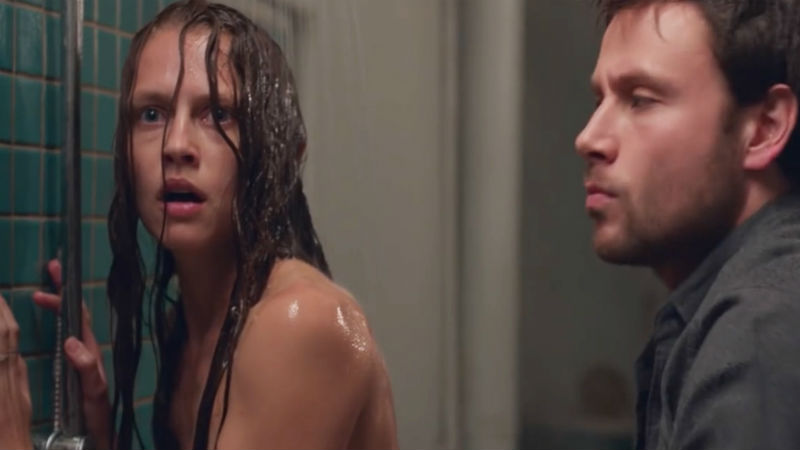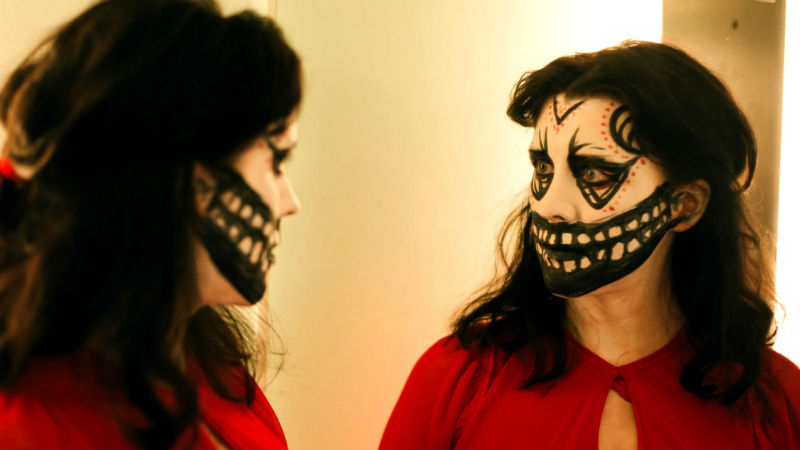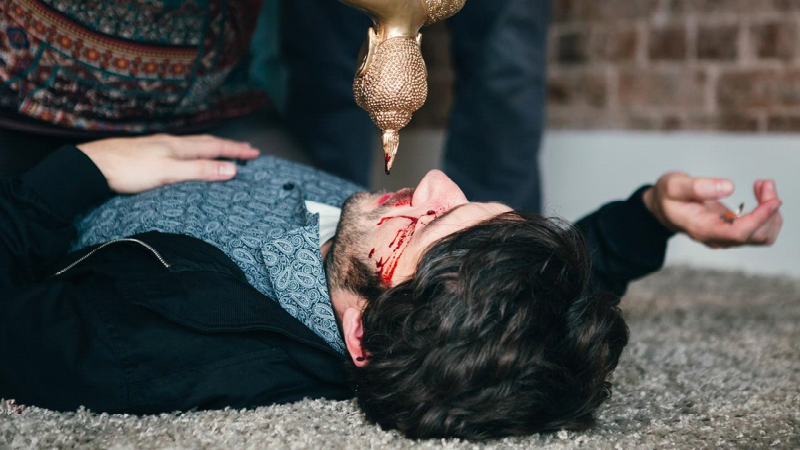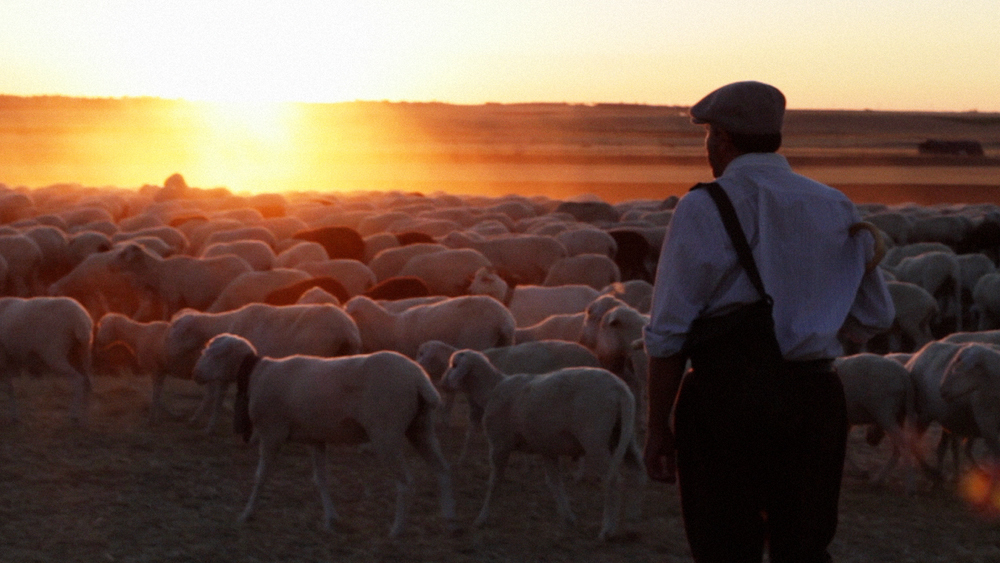Cinema has the power to change small and large communities, society and the world. But let’s not forget that movies are also a powerful tool for personal liberation. Watching a film can trigger profound changes within an individual. But what about making cinema? Filmmaking can transform individuals, allowing them to voice their innermost sentiments and ambitions which they would not be able to communicate otherwise. The transformational quality of cinema are at the heart of our business vision and mission.
Philip Brocklehurst is one of our favourite dirty boys, and a shining case case study of what cinema can do for individuals. He started his journey on DMovies last September, as we set up a permanent platform for his experimental short films. Now he wants to go one step further. A big step. And why shouldn’t he?
He is planning to do his first feature film The Woman and The Boy, and here he shares with us where the inspiration for the movie came from, what he intends to achieve with that, how it will affect his life. He is looking for sponsors and also wants you to get involved, so read on and find out more how you too can contribute to this very dirty and exciting maiden journey into the world of filmmaking!
DMovies – Talk about your experience as a filmmaker and what you have achieved so far. What’s your expertise?
Philip Brocklehurst – In 2015 I bought myself a little digital camera, and like any artist receiving the means of creating works of self expression, I used the instrument of creativity to express the deepest feelings in the heart and limitless imagination in the head to make several experimental short films which are all personal to me. I hold them with much affection, they were all beautiful to make, and they were great ways of learning how to work a camera, how to film scenes, and how to edit, they were like a training ritual, a rite of passage to help me grow and gain experience as a filmmaker.
The genesis behind my desire to make those short films and films in general was that I spent a lot of my youth alone with not many friends, reading and watching films was all I had and it helped me to build a love for the art of telling stories through words and most of all: through visuals, I found inspiration from many directors and writers that I deeply admire and respect for their unique and diverse styles for making compelling and engaging films. I finally reached a point in my life where I didn’t want to just write screenplays and books, I wanted to create moving works of art, and find my style and voice in the process.
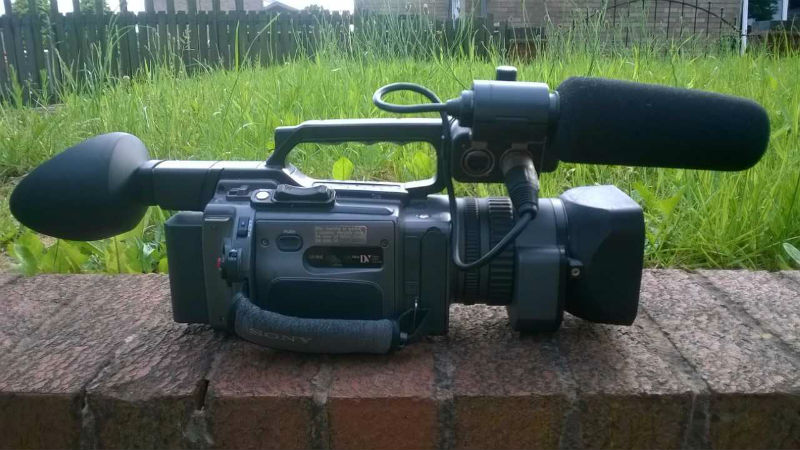
DM – What is it that Inspired you to write the script The Woman and the Boy? Describe others films, the moment the epiphany dawned in you, the feeling you experienced. Are you the “Boy” in any way? This is about inspiration.
PB – There are several inspirations for writing The Woman and The Boy. The first was that I have a long aspiration to make a film with an actress that I greatly admire and a woman that is deeply special in my heart, Margie Newton. People in Italy and even those outside of Italy know her as a gem of a cult actress who starred in cult films such as Hell of the Living Dead (Bruno Mattei) and The Last Hunter (Antonio Margheriti), both released in 1980, those in Italy know her for many more amazing films that were heightened by her divine performance and appearance such as Journey with Papa (Alberto Sordi, 1982), Love Struck (Nini Grassia , 1986) and La Puritana (Nini Grassia, 1989), to name a few of the films.
She was and still is the most beautiful and incredible woman and actress who ever lived, she is a true phenomenon in every meaning of the word. I have a dream which is to make a movie with her and have the honour of working with her, it would be indescribable to see her bless the screen with all her breathtaking grace and captivating presence in a film we made together. After all these years, she has never lost her charm and her power in front of the camera and even when the camera is off. She is one of a kind, and my muse in life, she gives me that bright spark to create, I often dedicate my work to her because she has the magic touch that gives my work life, and The Woman and The Boy is my magnum opus, or even masterpiece, dedicated for her.
The second inspiration was that Margie Newton had always had this idea for a film, her outline for the concept was a mature woman meets a young man of 18 and they begin to have a passionate and beautiful love affair together, it seems like it will never end but like all good things, sooner or later it most often does. The Boy breaks her heart, he has found someone else and has to end his relationship with the woman. The Woman is distraught at first but soon manages to rebuild her life through the healing power of yoga. Margie is a yoga instructor on the side and she has always wanted to include yoga in a film to show its beauty and power with healing a broken life and lead them back onto the right path of happiness and fulfillment.
Pure love has no restrictions, no prejudices, and no limits. I personally would have kept The Woman and The Boy together and have them overcome any disapproval from the narrow minded individuals who think love is only reserved to the same group of people, those people who can’t think outside the conventional box, but it would go against the drama and the redemption of the main character from the original outline, and I wanted to respect Margie’s wishes of having the story be about a woman experiencing a great loss, thinking her life is over, and then rediscovering it. I can’t say for certain but I think it’s important for Margie because she experienced something similar to it in her own life. Below are the images of Margie’s house in Italy
The third inspiration was I had recently seen both The Comfort of Strangers (Paul Schrader, 1990) and the 2007 version of Sleuth (Kenneth Branagh), both written by the late great British playwright Harold Pinter, as well as seeing the original 1972 version of Sleuth (Joseph L. Mankiewicz) written by another late great British playwright Anthony Shaffer who many will know as the writer for the 1973 cult classic The Wicker Man (Robin Hardy), I was inspired by both Harold and Anthony’s great skill of creating a fascinating and deep character study set in one or two locations, they crafted engrossing stories where the characters and their words are what drive it along, what they say comes first and what they do comes later as a result of the rich words they said to one another. Sleuth was certainly the biggest inspiration, it’s two people in a mansion, feeding off from one another with their lines and actions from beginning to end, I wanted to do something similar but in a more intimate and erotic sense.
And the bold and arousing sex scenes, they were inspired by the 1976 Japanese film In the Realm of the Senses, directed by Nagisa Oshima, one of my favourite directors. The film had such powerful and beautiful scenes of love making, it was ahead of its time and so incredible to behold, nothing has ever quite been done since, and it was certainly something I wanted to do with “The Woman and The Boy”, passionate sex scenes done with artistic taste.
And both the woman and the boy are based on me in some way. With the woman, it’s her being an author, I included that as a reference to my work, but her being rich and famous does not reflect me, [laughs], I just wanted to make her a successful author as a way of bringing her and the boy together at a book signing event, and the woman losing her family due to working constantly on books was again added for dramatic effect and gives her an arc at the end when she is helped by her husband and daughter and returns to her old life, it all comes full circle for her. And as for the boy, his love for an older woman is a reflection of me, but him leaving the woman for a younger woman is just for the sake of the plot and something I could never do.
DM – What is your main motivation for doing this film? Is it about expressing your inner desires? Is it a tool for personal liberation? Is it conveying a message to people? Is it achieving professional recognition? This is about aspirations.
PB – It’s a little of all of it. My personal desire to see a mature woman and a young man romantically and passionately involved in the most intimate and erotic detail. It is a tool for my personal liberation to make a beautiful and bold movie that will reach out and fill the viewer with a variety of emotions as they listen to the colourful dialogue between the two characters and witness the fires of their passion burn higher and higher until it eventually is extinguished. It is conveying several messages to people, to love with an open mind and open heart, it doesn’t matter what someone looks like, all that matters is what you feel in your hearts for each other
And if you do have your heart broken, never lose hope, you can find happiness again, you just need to be strong, and if you think you are not meant for happiness, you are wrong, we all are meant for it, you just need to believe in it and you will see it right in front of your eyes. I certainly would like to achieve professional recognition and show myself and the world that I can make a feature length movie, it would be a dream come true and if it is the beginning of many more feature films, it will be even better. I have a voice, a vision, and many stories to tell cinematically.
DM – How could making this film affect your life? Could it a permanent on the way you conduct your personal and your professional life, and how you engage with others?
PB – I’m sure, personally, people I know would be like: “I didn’t know you had such a passionate side about you.”, and I’m sure people who may recognize me for making the film will maybe feel the same way. And if they want to discuss the film with me, I would be happy to talk about it and perhaps share details about the story they didn’t see and enlighten them further with it, or they could do the same with me and discover a meaning that I didn’t see when making the film.
Different interpretations of a film are such a fascinating and unique thing, it’s diverse, like all of us who interpret things in our own different ways. And it could be the same way professionally too, and also, maybe it could attract attention to my name and help give me the chance to work on other projects. The sky is always the limit when you make a name for yourself and leave a lasting first impression.
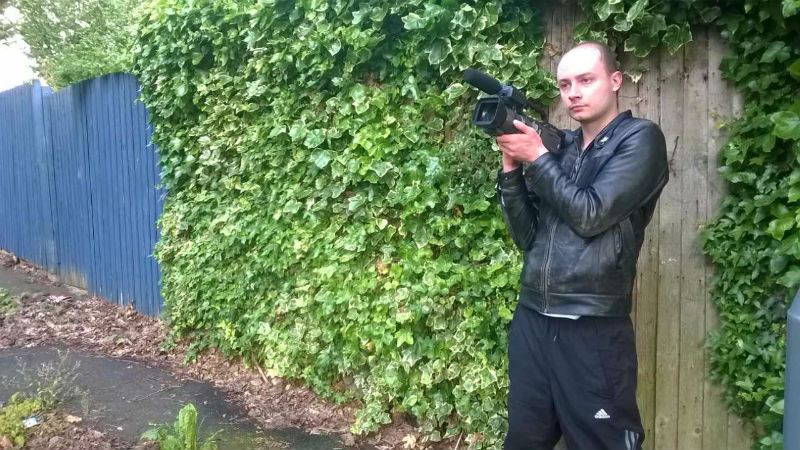
DM – How can other artists engage with you? What qualities are you looking for? What can they learn from you and what are hoping to learn from them? Talk about equipment and technology if you like
PB – Other artists of any profession: acting, cameraman, editor, lighting, boom mic operator, you name it, all the artists that make a film happen can engage with me. I am certainly looking for artists who share the same enthusiasm and dedication to the film, who won’t lose hope, who won’t give up, or who can’t take the commitment to create a film. They can learn from me that I believe a film is free to be how the creator envisions it, a film doesn’t have to abide to conventional rules, you are the artist and have the right to make the film the way you want it, but it is also a shared experience and if someone on the set has an idea that can help improve on it or add something you missed, or give more depth to the film, go with it and your instincts.
And I’m sure I can learn much from them, it would be an insightful experience learning about their experiences and I’m always open to advice that can help me grow as a filmmaker and be taught new things, skills and techniques with filming, editing and the camera. I have only ever worked alone on my short films, so it would be interesting and helpful to work with a crew.
DM – Likewise with sponsor. Why should they engage in this project? What would they gain? Talk about finances, costs, even if it’s a ballpark and early thoughts. People need to know you have a clear vision of what you are doing
PB – Sponsors, producers, distributors, I certainly require them to engage in the project, a film can not exist or have a future without their vital importance. Like any film, this one requires funding and releasing when finished. They would gain a fair share from the sales and profits from the film, and of course, my eternal gratitude for helping to make this all a possibility. If they know any crew that can help with the film, that would be much appreciated too, everything helps with an independent film. The costs would certainly be small, the film only has two locations. One is a house and the other is a park, it would all be small, the money would just be going to the cast and crew for working on it. And the cast itself would be small too, there are only four characters in the entire film: The woman. The boy. The husband. The daughter. And the crew would be small too, just the bare essentials who can help make it all happen behind the scenes.
I have a clear vision with what I’m doing, it is all planned out, I have the shots calculated and worked out, it should be an easy and smooth shoot, and it is certainly something worth investing in. It will be a beautiful, moving, and bold work of art that will definitely be remembered and talked about by lovers of cinema and the power it has to be a liberating tool to create artistic forms of self expression.
